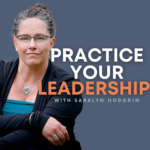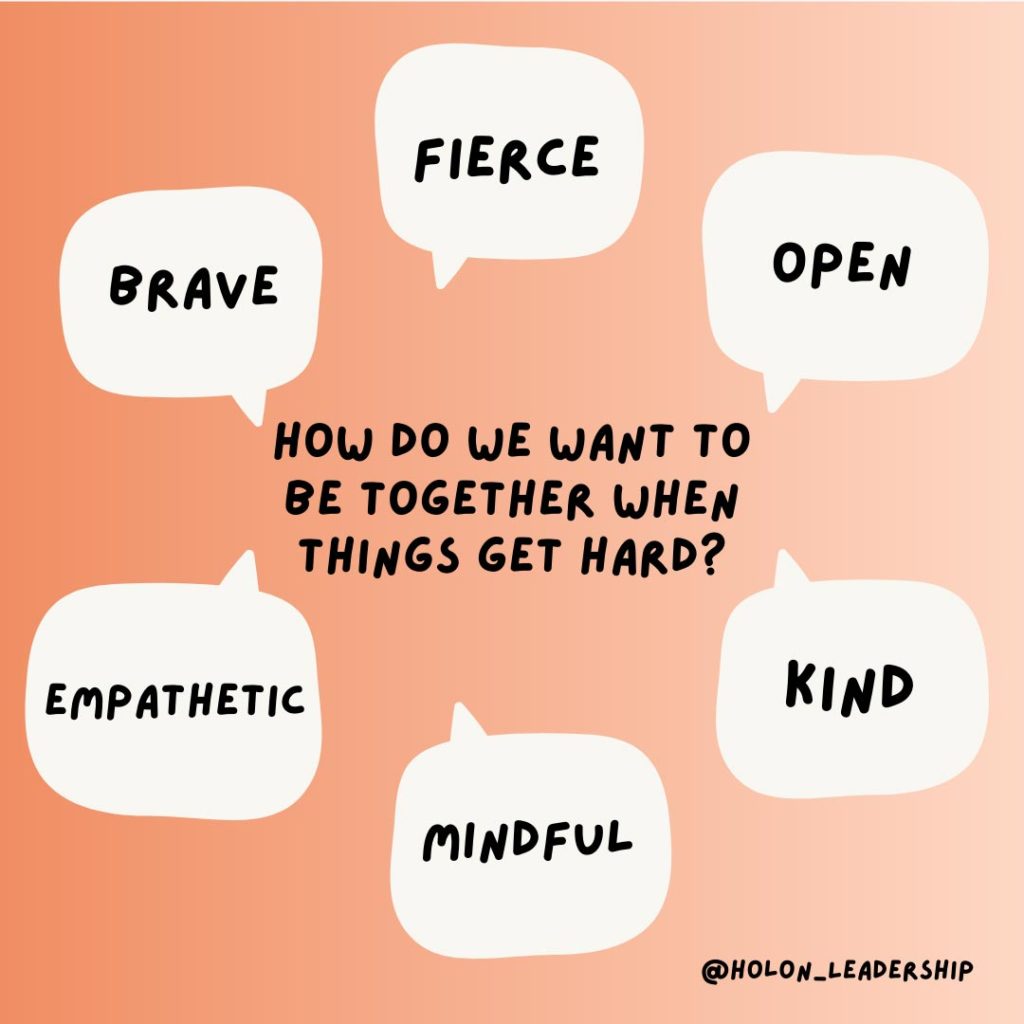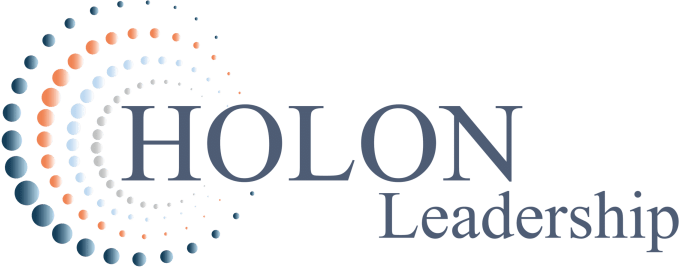The inner work of teams is something that I have dedicated a lot of my life to in terms of empowering teams and individuals. And one of the key tools that I continue to use is designing an Alliance. And designing an Alliance with the team for the team can be very powerful. Let me give you a stat. Cy Wakeman, a thought leader out in the coaching space at least, uses a stat around two hours per employee per day is spent on drama. Two hours a day on drama. On drama. Per employee. Per day.
Do the math for your team. Now some might be less, some might be more who knows, but as an average, two hours a day. What are some of the tools that we can use perspectives, insights to say, wow, that’s not where we want to spend our time. We want to spend our time on the impact we’re trying to have, the value we’re trying to create.
And sometimes what can be really helpful in preventing this two hours a day is designing an Alliance. Designing an Alliance about how we work so that we can do the work.
You might hear it as DTAs or whatever. There’s a whole bunch of jargon out there. But when you design an Alliance for the team DTA design team Alliance, and you take out half an hour, an hour before the project, or starting a new team, wherever it shows up, man, that ROI can pay off in spades. Why? Because we’re having an intentional conversation around how we work together.
What our group agreement is of how we want to be together, how we want to communicate, not just in terms of the mechanics, like we’re going to use email or slack though that it can get there. But what does trust mean to you? What does trust mean to me? What does it mean? You use the word, psychological safety.
Why’d you use that word? What does that mean? It’s getting into a conversation like that. So we can have a perspective that is bigger than ourselves. And that is co-created by all members of the team to get a shared understanding of what it means for us to work together. We want to co-create the culture in which we work together.
We want to, co-create a sense of a shared responsibility and accountability to be shaping and navigating that space and how we show up in that space. We want it to be intentional. We want to be able to establish awareness. That is not just my awareness or yours, but it’s collective awareness amongst us of, oh, that’s what we mean by the space. So that we can set expectations that are informed by all of us.
Not just the team lead, not just me, not just my assumptions or inferences. We want to set the nuance, the implicitness of what we usually take for granted and how we climb ladders of inferring different things and making up stories and assumptions. We can come right back down off of that if we spend some time setting the space of our context of working together by designing the Alliance of how we want to show up.
So, what that means is we are actually spending some resources to talk about how we work together. So what goes into a conversation like this? Well, again, and this can be when you’re kicking off a brand new team, a new piece of work that has a new team. Or this can be popping up in different places when somebody new comes on the team or a couple of people leave the team, right?
When the team, uh, system shifts, let’s reset our Alliance. So that’s how and when it’s used, but what is it? What is it that we dive into when we’re designing our Alliance together? What I generally do is set aside 60 minutes, grab your coffee, grab your whatever. But the conversation here is not when things are hot, not when people are triggered.
It is, it is at a time when you can come together and say, yeah, what does it mean for us to work together? What’s important to you. What’s important to me, some of the questions that we ask is. What do you want? Right. What’s the space that we’re working together and what’s the space that is helpful for you to show up and thrive?
What are some of the words that indicate that? What are some of the words that you’d like to share to say yeah, I show up in spaces that have this. A lot of people may say openness, trust, honesty, they may share words like this. And part of the work here is to say, okay, you used the word trust. What did you mean by that?
What would the behaviors be that would show trust for you? You start playing with the sticky notes, putting them up on the jam board or up on the wall. And what would that look like for you and what would that look like for you? And then you start to have a conversation of what does trust mean to us and the behaviors on this team, what does that actually look like?
Can you add in words of how you would feel, not just the behaviors, but also the feeling. Might be we have feelings of daringness, creativity, openness. That’s how it would feel. It would feel like I can participate. Like I could have the courage to step in when I actually don’t agree with what you’re saying, it would feel like that.
And it’s, it’s this back and forth conversation between behaviors of what it would look like and feeling of what it would feel like. So that’s great, unfold, sticky notes, and the whole bit, some of these words try to converge them into say five. You know, if you have 300 up on the board, you can’t manage that.
You want to be able to craft an artifact at the end of this, that can be your touch point of here are the five ways we want to be together. So the first part of this is just saying, what would it look like? Right. What does our space look like? And that is a really positive conversation, but the other part of this is a question around, okay.
When things are getting tough, when things are difficult. When we are all pushed to our edges, when you’re really uncomfortable with what’s going on, when there is obvious and sometimes not obvious conflict, then how do we want to be together? What are the behaviors then? How do we add to what we’ve put up on the board here, to what behaviors and the emotions that we want to have on our team at that point. Can we even create a manifesto, protocols, something that says, okay, when there is conflict, this is how we want to be.
This is what the behaviors look like on this team. Because these are intentions, but let’s tease those out with our behaviors. So if we start talking first from a place of how do we want this team to be and how do we want to thrive and then add to it from a different lens of a question of how do we want to be when times get tough?
You can start to see that what you’re designing are these group agreements that have a lot more texture.
Then we can add a layer of a conversation of you’re reflecting on your own self leadership and putting a question in the center, which is what can your team count on you for? Maybe you’ve done some strength-based assessments or whatever it might be in your own world, but even if there’s just one offering.
This team can count on me for… what is that one thing? That can really add to some of this agreement, that, or Alliance that you’re starting to build of what this team looks like and how we work together. Part of the conversation allows you to get at those textures so that you can have the tough conversation of how we want to be together so that when you get into the tough conversations, it’s like, oh yeah, this is how we said we’d be together.
And it’s also helpful when it’s not going the way, a conversation is not aligning with what we designed. And then instead of pointing at each other, one of you can point at the Alliance and say, hey, we agreed that we’d be like this. I’m not feeling that right now. What about you? Right.
It’s a tool that you can use when behaviors and words, they’re not aligning with what we agreed to. Gorgeous. All that to say is that from this textured conversation, you’re landing 3, 5, 7 key words that we can all tap into. That say, yeah, this is how we’ve designed our Alliance on being together. This is what you can count on me for when I show up in this team. You might even go to a place of what you each will commit to for one another, to hold this Alliance, what would that look like?
And when we design these alliances, the power of it is not so much in the artifact, which can go up in your slack or up on your wall or in your WebEx teams or wherever. Great. But the power of it is in the conversation and dialogue with one another, to be able to tease out the various perspectives and it’s going to raise some questions like, wow, how do you work with that as something that’s so important to you, how do you operationalize that?
Can we have a chat about that offline? Or wow, you know, this seems really important to you. I’m going to make sure that I hold that as important to me when we work together. Or there’s a conversation here, we don’t really know each other that well, maybe we want to go and do some kind of strength finder, a kind of conversation that get to know each other, whatever it might be.
Right. It’ll raise other conversations of who are, who who’s actually here? What are our perspectives? How do we each work differently? And therefore, how do we create a space where we can all shine. Where we can all step in and step up where we can all challenge and accept those challenges. Where we can give each other feedback in different ways that is rooted in respect and gratitude, and trying to find places of alignment.
When we design our Alliance as a team, we create an intentional space to talk through how we work together so that we can do the work.
The ROI of designing your Alliance at the very least to talk about how we work together, where you have all voices in the room to say, this is what I need to thrive. I bet you we can whittle away at that two hours per employee per day.
I bet we can prevent a lot of that drama. Stay in the practice.



 Apple Podcasts
Apple Podcasts Spotify
Spotify Google Podcasts
Google Podcasts